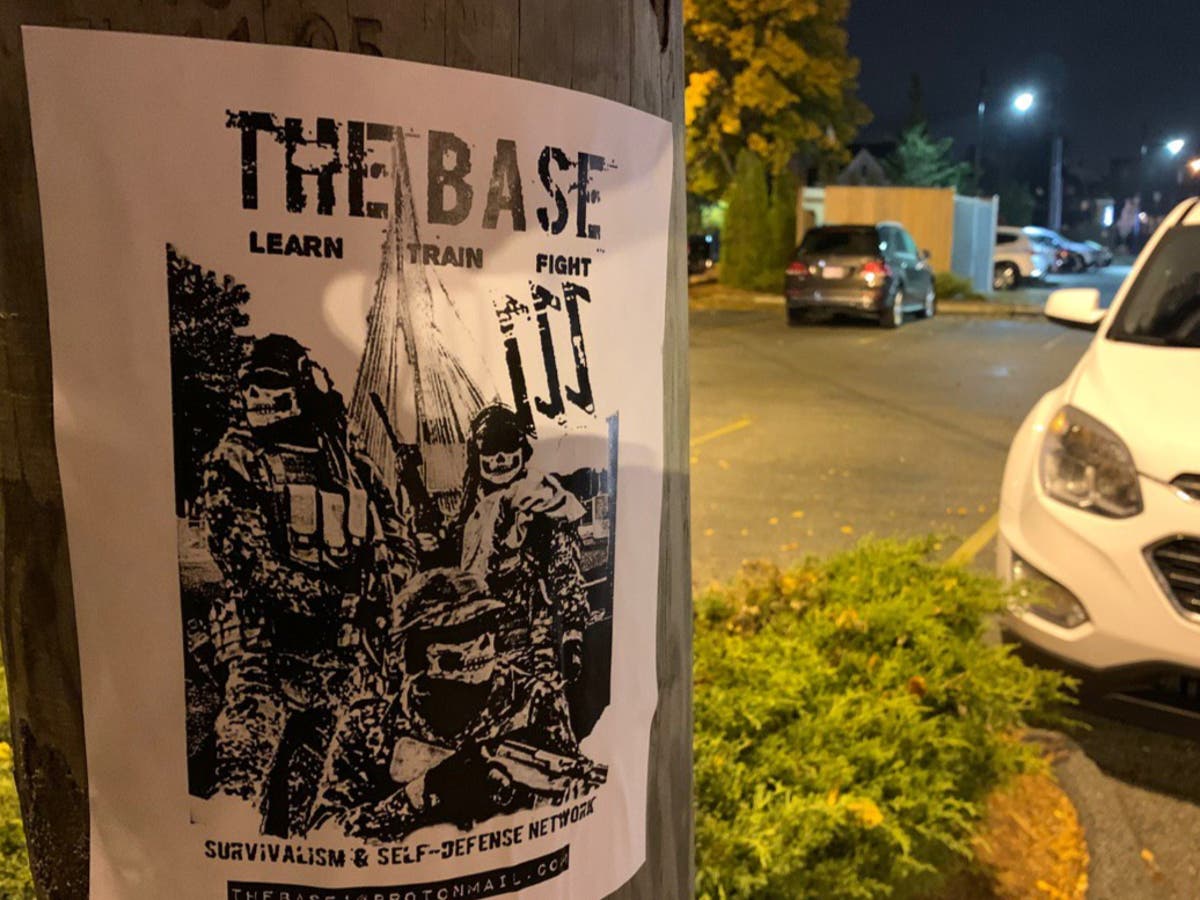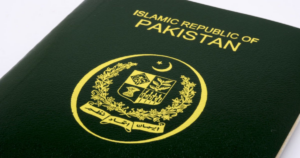
Steve* and his 16-year-old son Tom* were about to fly out of the UK to a family funeral when they heard their names being read out over the public address system at Bristol Airport.
They had arrived early to have some food and leave plenty of time before their flight, just two days after receiving news of a loved one’s death.
“They just said, ‘Would you please go to gate number one’, which wasn’t our gate,” Steve tells The Independent. “We went there and there were police officers, and they explained they were doing a Schedule 7 port stop under the Terrorism Act.”
The power is used at UK borders to stop people entering or leaving the country, and “determine whether they are involved in the commission, preparation or instigation of acts of terrorism”.
Unknown to Steve, counter-terror police had been monitoring his son’s online activity as he delved into online neo-Nazi networks.
He became one of dozens of children prosecuted for terror offences in the UK, amid warnings over a “new generation of extremists” being radicalised by online material.
Around 13 per cent of terror suspects are now under the age of 18, and the majority of those are linked to far-right extremism.
Tom had started viewing extreme and violent channels on platforms including Discord and the encrypted messaging app Telegram, including one linked to a US militant group that has since been banned as a terrorist organisation.
Police took him and his father for separate interviews at the airport, searched their luggage and seized their phones and electronic devices.
At that point, Steve says he believed it was a “random check”, thinking: “We’ve just come to the airport maybe a bit too early, you’ve got bored police officers sitting in an office – they’ve got some time, they’re going to use it.”
We had no idea that there was such a law here that you cannot possess some books”
Police released the pair just before their flight departed and allowed them to leave for the funeral, but Tom told his father that officers were going to “find something on my phone that shouldn’t be there”.
The teenager admitted having a copy of the Anarchist Cookbook, which contains instructions on making explosives and other “stuff like that”.
“We had no idea that there was such a law here that you cannot possess some books,” Steve says.
“For me it was impossible, so I told him, ‘OK, you probably have some books but you’re not in any terrorist groups,’ and obviously he was not in any group or movement and he didn’t plan anything.
“I said, ‘Mate, we can come back, they will probably have a chat with you, give you a slap on the wrist, don’t do it again and you will be fine’. He’s got no evil intentions and no plans to do anything.”
But when they returned to the UK, police were waiting at the airport and arrested Tom on suspicion of collecting documents that could be useful to a terrorist.
They took the teenager into custody and told Steve they would be searching his home.
✕ ‘Miss Hitler’ and fellow neo-Nazis convicted of National Action membership
“It was a total shock, I just felt my whole world was falling apart,” he says. “I was coming back from a bloody funeral with my son and now I need to call my wife to tell her they arrested him and they are going to come to the house and search it. It was totally unreal.”
Steve arrived home to find officers searching the family home, taking air guns and photographing Tom’s books, games and Warhammer figurines.
An inspection of the teenager’s bedroom found neo-Nazi symbols including swastikas, SS runes, a noose and a reference to the lynching of “race traitors” carved into his desk.
He had a skeleton face mask, popularised by terrorist groups including National Action and Atomwaffen Division, which he had worn in a series of photos found on his mobile phone.
It was a total shock, I just felt my whole world was falling apart
Tom had photographed himself wearing camouflage, while holding an axe and firing replica weapons, as well as performing a Nazi salute.
In another photo, which he claimed in court was a joke, he superimposed a slogan urging people to read a notorious neo-Nazi text that incites “lone wolf” terror attacks.
Examinations of his electronic devices showed that he had downloaded documents including Hitler’s Mein Kampf, a manifesto published by Christchurch mosque attacker Brenton Tarrant and a neo-Nazi satanist text calling for people to “cull the worthless, the scum, by being a vigilante”.
New Zealand shootings: Victims of Christchurch mosque terror attacks Show all 11 1 /11 New Zealand shootings: Victims of Christchurch mosque terror attacks New Zealand shootings: Victims of Christchurch mosque terror attacks Zakaria Bhuiyan People gather hoping to find out information about Zakaria Bhuiyan who is still missing after the mosques shootings in Christchurch. David Moir/AFP New Zealand shootings: Victims of Christchurch mosque terror attacks Mucad Ibrahim Three-year-old Mucad Ibrahim, the youngest known victim of the mass shooting at two mosques in Christchurch, New Zealand, on 15 March 2019. Abdi Ibrahim via AP New Zealand shootings: Victims of Christchurch mosque terror attacks Nadeem Rasheed Nadeem Rasheed, brother of Pakistani Naeem Rashid who died alongside his son Talha Naeem, 21, who were killed in shooting at a Mosque in Christchurch, at their home town in Abbottabad, EPA New Zealand shootings: Victims of Christchurch mosque terror attacks Omar Nabi Omar Nabi speaks to the media about losing his father Haji Daoud Nabi, 71, in the mosque attack REUTERS New Zealand shootings: Victims of Christchurch mosque terror attacks Ash Mohammed Ash Mohammed, right, talks to a police officer about his father and two brothers who are missing near the Masjid Al Noor mosque AP New Zealand shootings: Victims of Christchurch mosque terror attacks Akhtar Khokhur Akhtar Khokhur, 58, shows a picture of her missing husband Mehaboobbhai Khokhar, 65. AP New Zealand shootings: Victims of Christchurch mosque terror attacks Wasseim Alsati A note is seen on a window of a door at the family home of Wasseim Alsati in Christchurch on 17 March 2019. AFP/Getty Images New Zealand shootings: Victims of Christchurch mosque terror attacks Haroon Mahmood Relatives offer condolences to nephew (centre) of Haroon Mahmood, a Pakistani citizen who was killed in Christchurch mosque shootings. AP New Zealand shootings: Victims of Christchurch mosque terror attacks Farid Ahmed Farid Ahmed (pictured) survived the Al Noor mosque shootings but his wife Husne was killed. AFP/Getty Images New Zealand shootings: Victims of Christchurch mosque terror attacks Syed Areeb Ahmed A relative shows a picture of Syed Areeb Ahmed, a Pakistani citizen who was killed the Christchurch mosque shooting. AP New Zealand shootings: Victims of Christchurch mosque terror attacks Naeem Rashid A relative looks at a picture on a mobile phone of Pakistani nationals Naeem Rashid and his son Talha Naeem (right) who died in the Christchurch shootings. AFP/Getty Images
They were not included in the criminal charges later brought by police – 11 counts of possessing information useful to a terrorist – which covered a separate series of manuals instructing readers on making bombs, incendiary devices and poisons, and how to kill using knives and other weapons.
Tom was released in the early hours of the morning following his arrest, and Steve recalled him telling his parents that he did not realise the downloads were illegal, and that he was not in any far-right groups.
He believes his son, and says he thought that the teenager – who was 15 when he committed the offences – was “playing a game” while shooting air rifles in the garden.
“When I saw him running into the garden with his gun I thought, ‘This f***ing kid, he’s still so immature’, but there was nothing to worry about,” he says.
Tom initially told police that he was not a neo-Nazi and created a false persona online to study the ideology, but admitted to his parents that he sympathised with it.
When I saw him running into the garden with his gun I thought, ‘This f***ing kid, he’s still so immature’
“Now it has changed, he said it’s just too serious because he has seen what the consequences even from no active participation can be,” Steve says.
“He was never going to act on it, he never tried to belong to any group, it was mostly his way of viewing the world, viewing what’s happening and I personally think it’s kind of a rebellion.”
The father insists his son did not fit the stereotype of an “isolated” teenage neo-Nazi, saying he had an active social life, going out frequently with his girlfriend and friends.
He says he had good school attendance, completing his GCSEs while the court case was ongoing. He is now studying for A-levels and hopes to go to university.
Tom pleaded guilty to all 11 offences on the first day of his trial at Bristol Magistrates’ Court, but on the basis that he was not a follower or advocate of neo-Nazi “Siege” ideology, and did not read the documents in full or encourage anyone to act on them.
A judge decided not to jail the boy at Bristol Magistrates’ Court (Getty Images)
Senior District Judge Paul Goldspring, chief magistrate for England and Wales, told the court he had planned to send the teenager into custody but changed his mind after receiving a letter expressing remorse.
Tom wrote that he had been “stupid”, “childish” and did not realise what he was doing was illegal, adding that he did not want to cause any harm to anyone.
Passing sentence in July, the judge found that the teenager did not pose a substantial risk of serious harm to the public.
He said jailing him would “undo the rehabilitative and developmental steps” taken since his arrest and do “irreparable harm for the future” by disrupting his education and family life.
But Judge Goldspring told the court he was “not entirely convinced” over Tom’s claims about his mindset and pointed to evidence that he had sought to avoid detection, failed to respond to warnings about comments made at school and warned people against being flagged to the Prevent counter-extremism scheme.
He made a 12-month referral order, which will include rehabilitation programmes and checks on Tom’s online activity, and will result in a custodial sentence if broken.
Steve says he had been “too scared to think” what would happen if his son was jailed, and that after the hearing the teenager had “melted down” crying on the floor.
“What I can’t understand is why they didn’t come to us at the start with Prevent,” he adds. “If they had any suspicions, why not come over?”
Asked whether Tom would have engaged with the scheme, which he talked disparagingly about online, the father insists he would have done to avoid “bad consequences”.
Since his son’s arrest, he has been researching other child terror cases and believes that under-18s should not be prosecuted unless they are directly involved in terrorist activity or planning attacks.
“Youngsters are right to look, to search and to seek who they are,” he adds. “It can sometimes drive them into the right but there should be a better way of dealing with this than just arrest them.”
The national coordinator for Prevent said the decision to prosecute young people or refer them for intervention sat with investigating police officers.
Chief Superintendent Nik Adams said there was no “cut-off point” for charges by age, but that it was factored into decision-making alongside other vulnerabilities.
“We want to help, we don’t want people to be prosecuted, but it relies on people stepping forward,” he added.
“Our ambition is to intervene at the earliest opportunity and not be in a situation where we are debating between an arrest and Prevent.
“The way we can most effectively achieve that is when people come forward early to share concerns they’ve got.”
*names have been changed to protect anonymity, which is required by law due to the boy’s age




